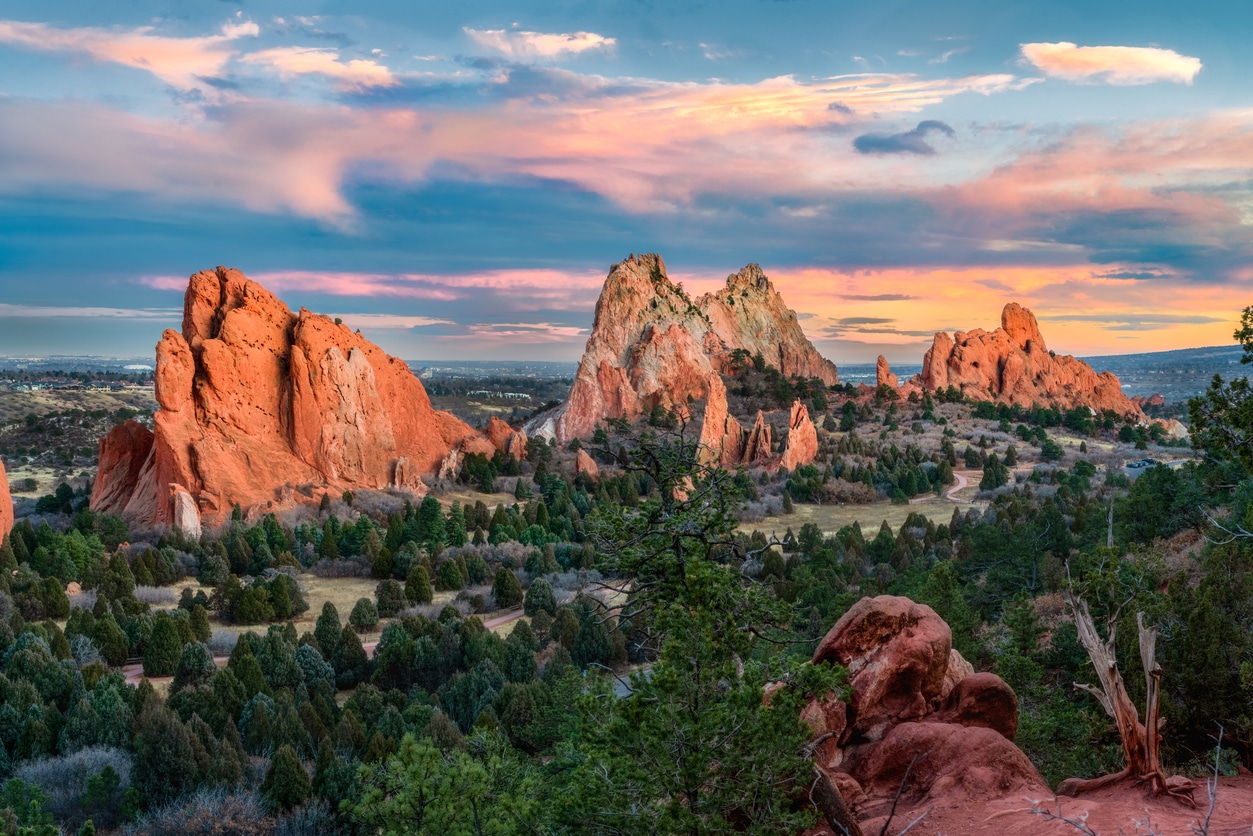Did you know the state of Colorado gets more than 300 days of sunshine a year? With that kind of weather, who wouldn’t want to move to The Centennial State?
Plenty of people are doing just that, making Colorado Springs their new home. With Pikes Peak and the Rocky Mountains offering plenty of outdoor adventure just to the west and a vibrant art scene in its downtown, the city offers a mix that’s hard to find elsewhere. It has room to grow, space to breathe, and a lifestyle that embraces the outdoors without giving up the conveniences of city life.
If you’re thinking about joining the steady stream of newcomers to Colorado Springs, you’ve come to the right place. This guide covers what you need to know before making the move — whether you’re moving long distance or from within the state. From housing and schools to weather quirks and the job market, this is what life really looks like in Colorado Springs.

16 Things You Should Know About Living in Colorado Springs Before Making the Move
People come to Colorado Springs for the views, the space, and the chance to live close to outdoor adventures. But it’s important to face reality when moving to Colorado Springs as well. The cost of living is rising, however it’s still one of the more affordable Colorado cities. The altitude takes some getting used to. And different parts of the city offer very different experiences.
Here’s what you need to know before you make the move.
1. Colorado Springs’ cost of living is lower than you’d expect
The cost of living in Colorado Springs is lower than what you'll find in most major metros and even other parts of the state, such as Aspen, Telluride, and Breckenridge. For example, someone earning $100,000 in San Francisco would only need to make about $61,000 to maintain the same standard of living in Colorado Springs. That said, costs are rising. For those moving to Colorado Springs, be aware the median home value is now around $465,000, and average rent is about $1,500.
What salary do you need to live in Colorado Springs? According to the MIT Living Wage Calculator, a single adult needs to make about $50,000 a year to cover basic living expenses. For a family of three, it’s closer to $150,000. Colorado’s flat 4.4% state income tax helps keep things manageable, and homeowners also benefit from the state’s low property tax rate. Averaging around .55%, it’s one of the lowest in the country.
2. You’ll plenty of sunny, dry days in Colorado Springs, but be ready to adjust to the altitude
In Colorado Springs, summers are warm but rarely sweltering, with highs in the mid-80s. Winters bring snow, but not in overwhelming amounts — about 38 inches a year, with winter highs in the 40s and lows in the teens. In addition, humidity is low year-round, which helps the heat feel less intense. But it also means you’ll need to moisturize and hydrate more than usual. (Seriously, get ready to drink a lot more water.)
The city sits just over 6,000 feet above sea level, which can be a shock if you're coming from lower elevations. Most people acclimate within a few days, but you could suffer from altitude sickness. Mild symptoms of headaches, dizziness, or fatigue are common early on, especially if you’re active too soon after arriving. Staying hydrated and easing into outdoor activity helps avoid symptoms. Full adjustment, especially for exercise, might take a couple of weeks. Once your lungs acclimate, it’s time to start hiking — the views are well worth it.
3. Colorado Springs' safety varies by neighborhood, with some areas much safer than others.
Is Colorado Springs safe? It depends on the neighborhood. The city’s overall crime rate is about 74% higher than the national average, with violent crime at 6.94 per 1,000 residents — above the U.S. median of 4.
The good news is, crime rates aren’t high everywhere in Colorado Springs. Some areas are much safer than others. The safest neighborhoods include Sun Hills, Cedar Heights, and Broadmoor Oaks. These areas have low crime rates and are known for their family-friendly environments. On the other hand, neighborhoods like West Colorado Springs, Southeast Colorado Springs, and East Colorado Springs have higher crime rates.
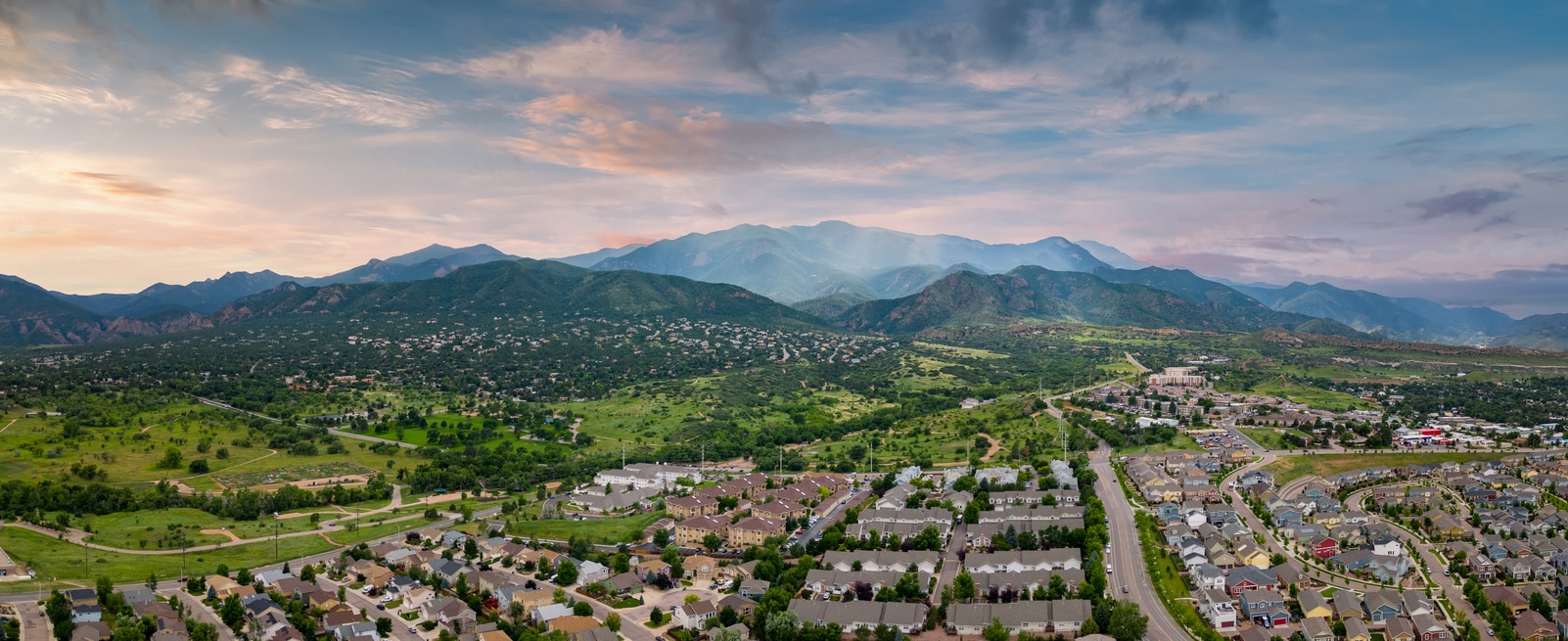
4. Colorado Springs home prices are down as rents rise
Good news for anyone moving to Colorado Springs: The average home value of $465,000 has decreased 1.0% over the past year. While that drop signals a cooling market, prices are about 8% higher than they were five years ago. And well-priced properties move fast, with homes pending in about 20 days on the market. However, inventory is up, so buyer leverage is growing. It’s not a buyer’s market just yet, but it’s getting closer.
The rental market tells a different story: The average rent in Colorado Springs is up from last year at $1,500 but still cheaper than Denver, and what you pay really depends on where you live. Rent for a two-bedroom home could be as low as around $1,000 in East Colorado Springs, $2,000 in Briargate, and up to $2,500 or higher in downtown. For anyone not quite ready to buy, Colorado Springs has some rental options, but you’ll want to move quickly. Inventory is tight and demand keeps rising.
Need some help planning your relocation? Use our moving checklist to make sure you don’t miss anything during your move. |
5. Colorado Springs offers strong job prospects, though average salaries are slightly below the national norm
Colorado Springs has a well-rounded job market driven by defense, aerospace, health care, and a fast-growing tech sector. International companies Lockheed Martin and Northrop Grumman, and several Space Force bases, anchor the city’s economy. The local tech workforce has grown steadily, and health care continues to expand to meet the needs of the region’s growing population. For job seekers in high-demand fields, moving to Colorado Springs offers a promising outlook.
When it comes to compensation, the average salary in Colorado Springs sits around $59,000 per year. That’s slightly below the national average, but many jobs, especially in technology, engineering, and health care, offer significantly higher pay. As of March 2025, the unemployment rate in Colorado Springs is 4.7%, a tick above the national average of 4.2%. In Colorado Springs, you’ll find plenty of career opportunities to afford a comfortable lifestyle.
6. There’s a Colorado Springs neighborhood for every lifestyle
Whether you're moving out of state or relocating from within Colorado, you’ll want to do your research on Colorado Springs before deciding where to live. Not all neighborhoods in Colorado Springs offer the same experience, and knowing what’s right for you can help you choose the best neighborhood to move to whether you’re moving with kids, starting a new career, or just looking for peace and quiet.
Best for Families: Woodmoor
Woodmoor sits just outside Colorado Springs in rolling, wooded hills with a quieter pace that appeals to families. The unincorporated community is part of the Colorado Springs metro region, but is also just a few miles east of the town of Monument. In Woodmoor the homes are spacious, the lots are big, and the whole neighborhood feels tucked into the trees. It’s part of the Lewis-Palmer School District, one of the most well-regarded in the state. Locals take pride in the open spaces, sledding in winter, and spotting wildlife. It’s safe, scenic, and full of room to grow.
Best for Young Adults: South End
South End, just south of downtown Colorado Springs, has quietly become one of the most interesting neighborhoods in the city. It’s walkable, social, and full of energy — thanks in part to the Ivywild School, a converted elementary school that now houses a brewery, bakery, and other small businesses. You’ll find mural-covered buildings, bike-friendly streets, and a rotating lineup of live music, art events, and night markets.
Most Affordable and Safe Neighborhood: Briargate
Briargate strikes a rare balance in Colorado Springs: It’s quiet, safe, and surprisingly affordable for what you get. Tucked in the city’s northeast region, the neighborhood is filled with well-kept homes, easy access to parks, and shopping. Conveniently located near I-25, it’s easy to get to other parts of the city or over to Denver. Briargate is popular with families thanks in part to its good schools, but plenty of young professionals and retirees call it home too due to its central location and wealth of things to do.
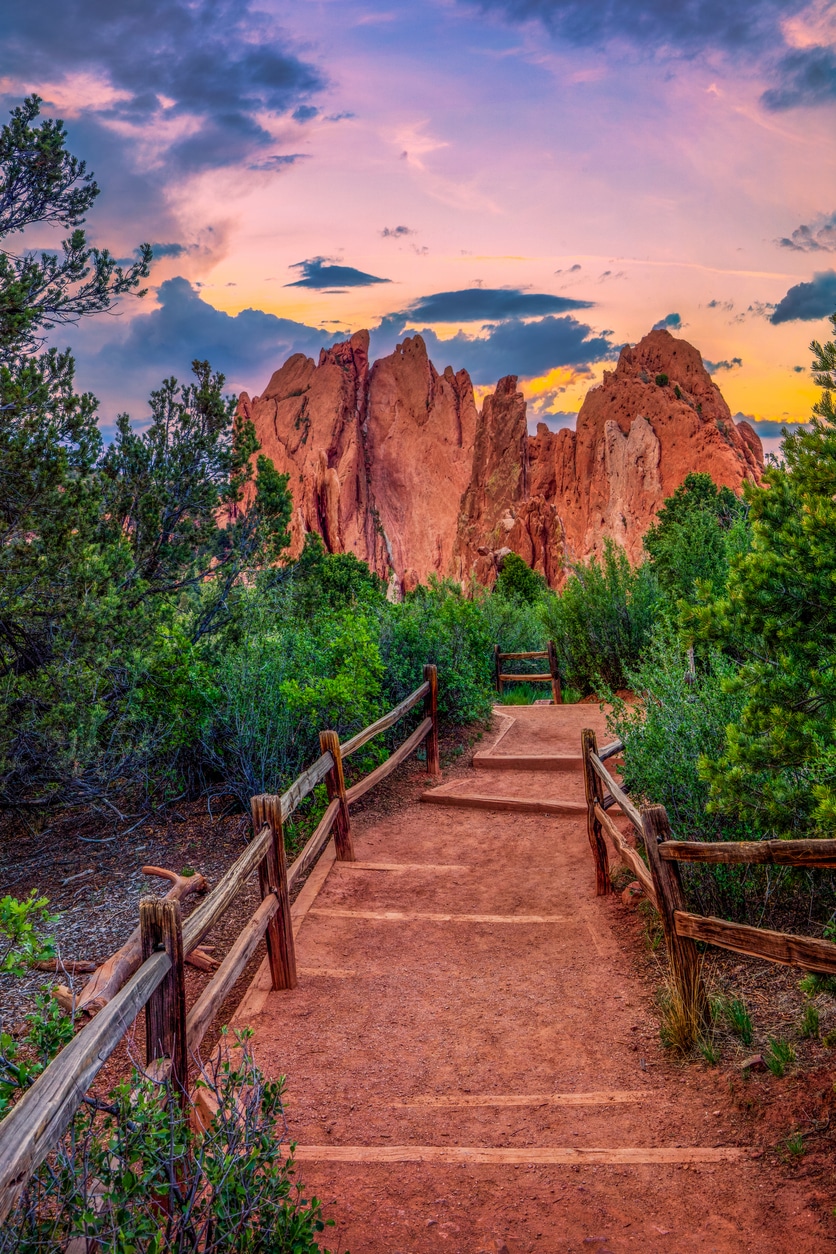
7. There are plenty of fun things to do in Colorado Springs
Colorado Springs is the kind of place where you can hike a mountain in the morning, visit a museum in the afternoon, and catch live music at night. It’s got something for just about everyone — families, singles, outdoor lovers, and art fans alike.
Here’s just a taste of what the city has to offer.
Garden of the Gods: Hike, climb, or just take in the red rock views. It’s free and open year-round.
Cheyenne Mountain Zoo: It’s the only mountain zoo in America, with stunning views and giraffes you can feed.
Pikes Peak Cog Railway: Ride to the top of one of the most iconic mountains in the United States.
Ivywild School: A repurposed school turned community hub, complete with a brewery, bakery, and live music.
Red Rock Canyon Open Space: – Enjoy the great hiking trails at this quieter alternative to Garden of the Gods.
Space Foundation Discovery Center: Explore hands-on exhibits for kids (and adults) that bring space down to Earth.
Manitou Springs Penny Arcade: This vintage arcade offers games and fun for all ages. It’s weird and nostalgic in the best way.
Labor Day Lift Off: This massive hot air balloon festival lights up the sky every September.
8. Yes, there are really springs here
The name “Colorado Springs” traces back to the natural mineral springs that once bubbled up across the region. While most of the original springs in the city itself have faded into history — like Tahama Spring in Monument Valley Park — their legacy lives on nearby.
Just six miles to the west, Manitou Springs is home to eight active mineral springs, each with a different mineral makeup and flavor. You can follow a self-guided walking tour through town to sample the water and learn about the springs’ long-standing cultural significance.
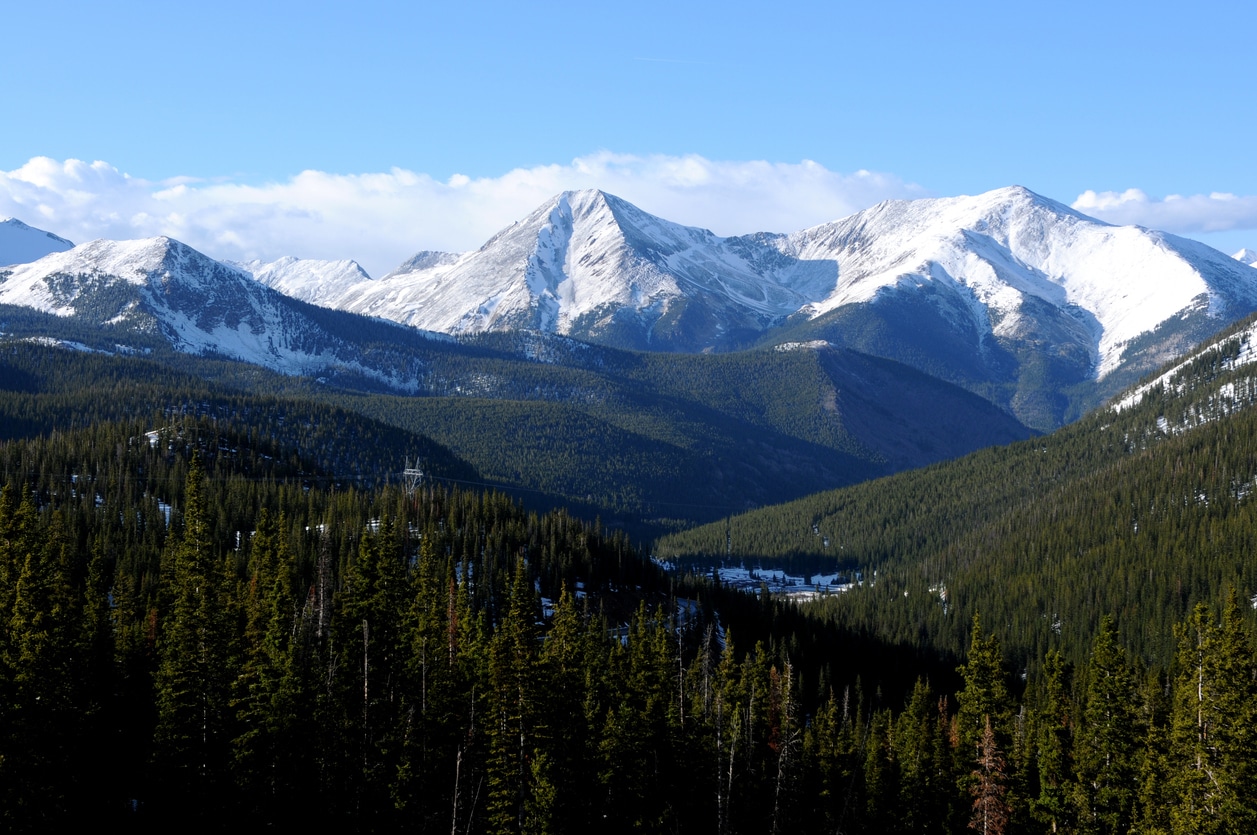
9. If you’re the outdoorsy type, you’ll never run out of things to do in Colorado Springs
You don’t have to go far to find adventure in Colorado Springs. One morning might start with a steep climb up the Incline. The next, you’re coasting through Red Rock Canyon or casting a line at a nearby reservoir. There’s always something outside worth doing — and it can all be found close by.
Venture a little further out from Colorado Springs, and you can enjoy climbing, rafting, and camping through the summer. In the winter, great skiing is less than two hours away, with resorts like Monarch Mountain and Breckenridge offering quick access to powder in the winter. Locals don’t wait for vacation time to get outdoors — it’s just part of the daily routine. For a lot of people moving to Colorado Springs, this is the biggest draw.
10. The food scene in Colorado Springs is low-key but legit
You won’t find a Michelin star in Colorado Springs — and that’s kind of the point. The food scene here leans more casual, creative, and proudly local. It’s the kind of place where food trucks set up near breweries, and hole-in-the-wall diners share the block with farm-to-table bistros. People here like their meals hearty, unfussy, and made by someone who lives down the street.
That makes exploring the dining scene a real adventure. You can get killer green chile at King’s Chef Diner, smoked brisket at Rudy’s, or house-made pasta at Paravicini’s. Breweries like Cerberus and Phantom Canyon serve up their own menus alongside local pints. And if you’re into coffee or cocktails, there’s a growing list of indie spots doing it right.
13. Nightlife does exist!
Nightlife in Colorado Springs is there if you want it, and for young professionals looking for some excitement, there’s a good variety. You’ll find breweries with trivia nights, cocktail bars with solid playlists, and venues like Lulu’s Downtown and The Black Sheep booking national acts.
Downtown gets lively on weekends, especially around Tejon Street, but overall the vibe stays pretty relaxed. Most people in the Springs aren’t out till 2 a.m. They’re catching a happy hour after a hike or heading home after a show. It’s more about low-key nights with friends than club-hopping — and for a lot of residents, that’s exactly the pace they’re looking for.
14. Colorado Springs is a city built for drivers
The city’s Mountain Metropolitan Transit operates thirty-four bus routes across the metro area, including free downtown shuttles like The Zeb. However, service is limited in frequency and coverage outside of central hubs. Buses typically run from early morning until evening, with reduced service on weekends.
Walkability varies by neighborhood. Downtown offers higher walk scores, with access to shops, parks, and restaurants. However, the citywide Walk Score is just 36, meaning most errands require a car. In short, owning a vehicle makes daily life significantly easier.
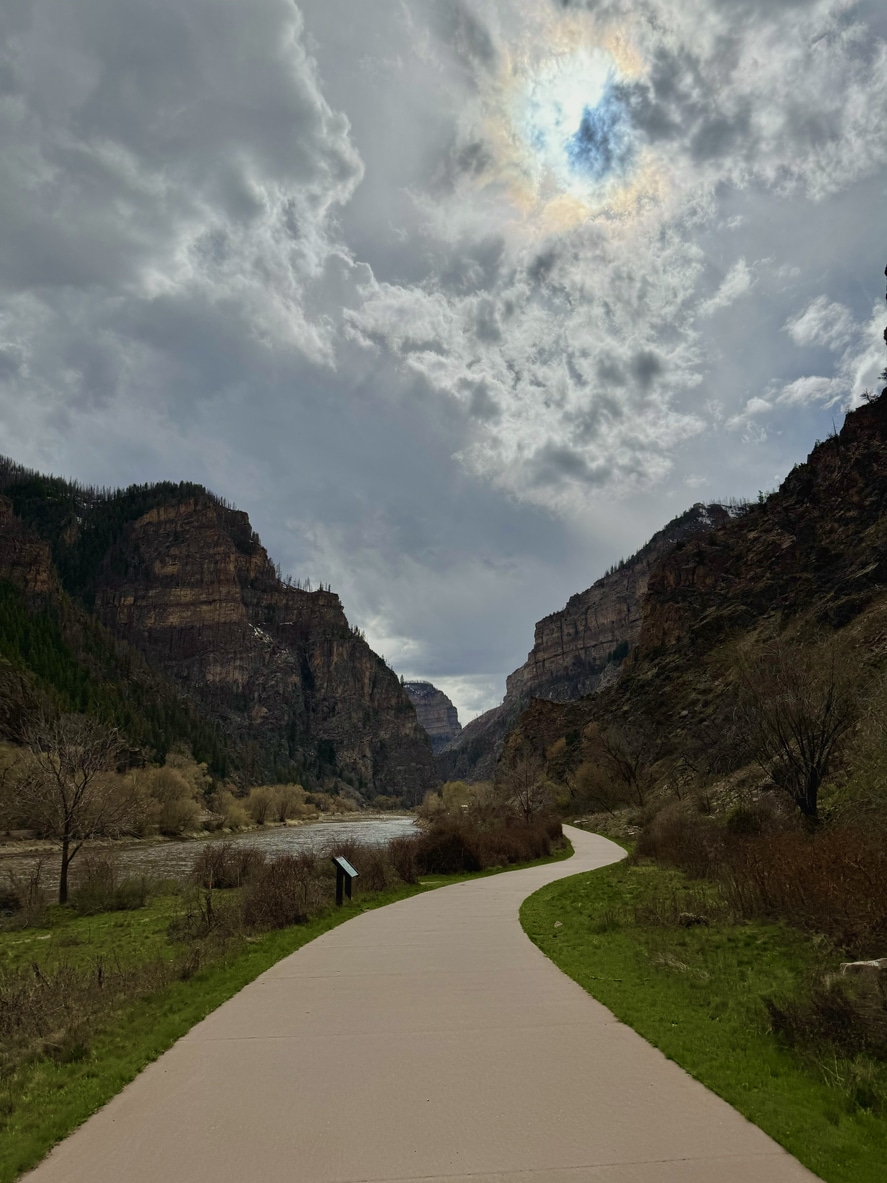
15. You’re never far from a weekend escape
In a few hours (or less) from Colorado Springs, you can hit the ski slopes, soak in a hot spring, or wander through a mountain town with real personality. Here are a few favorites:
Denver: Professional sports, museums, and a way bigger food scene in the capitol city just 1.5 hours north.
Great Sand Dunes National Park: Towering dunes you can hike or sled down, about 2.5 hours south.
Pagosa Springs: Natural hot springs and mountain views, about 4 hours away.
Glenwood Springs: Another hot springs hub with caves and the famous Hanging Lake trail, around 4 hours northwest.
Paint Mines: A colorful, otherworldly hike less than an hour east.
Paonia: A quiet Western Slope town with orchards, wineries, and one of the best farmers markets in the state, about 5.5 hours away.
16. Colorado Springs has a deep and surprising history
Long before it was a fast-growing city and military hub, Colorado Springs was a frontier outpost with big ambitions. Founded in 1871 by General William Jackson Palmer, the city was pitched as a resort destination thanks to its clean air, mineral springs, and views that could sell themselves. It quickly became a haven for health seekers and wealthy travelers escaping the East Coast.
Then came mining, bringing in another wave of people. The discovery of gold in the area and the rise of nearby Cripple Creek helped put the region on the map. Then in the 20th century, Fort Carson and the Air Force Academy gave the region a new strategic importance. Today you still see some remnants of Colorado Springs’ resort-town roots, but the city has grown into something bigger — a place shaped by ambition, reinvention, and more than a little grit.
Pros and Cons of Living in Colorado Springs: What to Know Before You Move
If you're thinking about a move to Colorado Springs, it helps to see the big picture. Here's a quick breakdown of the pros and cons of living in Colorado Springs.
Pros:
Access to world-class outdoor recreation
Strong job market in defense, aerospace, and tech
Lower cost of living than Denver and other major metro areas
Safe, family-friendly neighborhoods
Plenty of fun things to do for all ages
Easy access to weekend trips and mountain escapes
Unique history and sense of place
No state income tax on Social Security benefits
Cons:
Public transportation is limited
Housing prices are high and the market remains competitive
Nightlife is quieter than in larger cities
Altitude can take time to adjust to
Living in Colorado Springs comes with trade-offs, but for many, the mix of affordability, access to nature, and steady growth makes it a smart — and satisfying — move.
Thinking About Moving to Colorado Springs? Here’s What to Keep in Mind
In Colorado Springs, you get mountain views, room to breathe, and a lifestyle that’s built around the outdoors. Add in a growing job market with strong local communities, and it’s easy to see the appeal.
If the idea of trailheads over traffic and fresh air over city sprawl sounds good to you — and you don’t mind high altitudes — then a move to Colorado Springs should be on your radar. When it’s time to pack up, Colonial Van Lines can help get you there. With 50+ years of long-distance moving experience, we’ll handle the logistics so you can focus on settling in. Get your free quote today!

